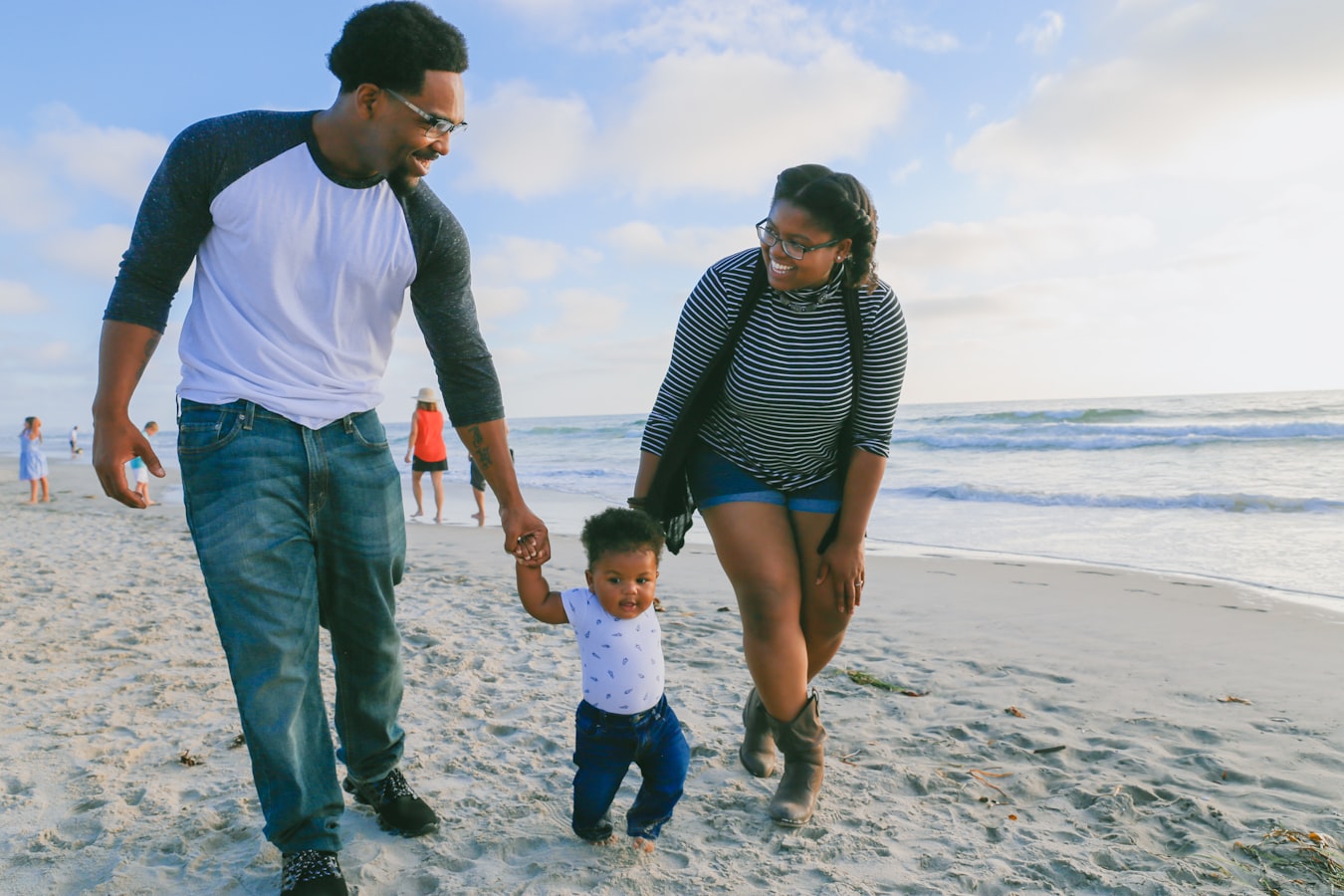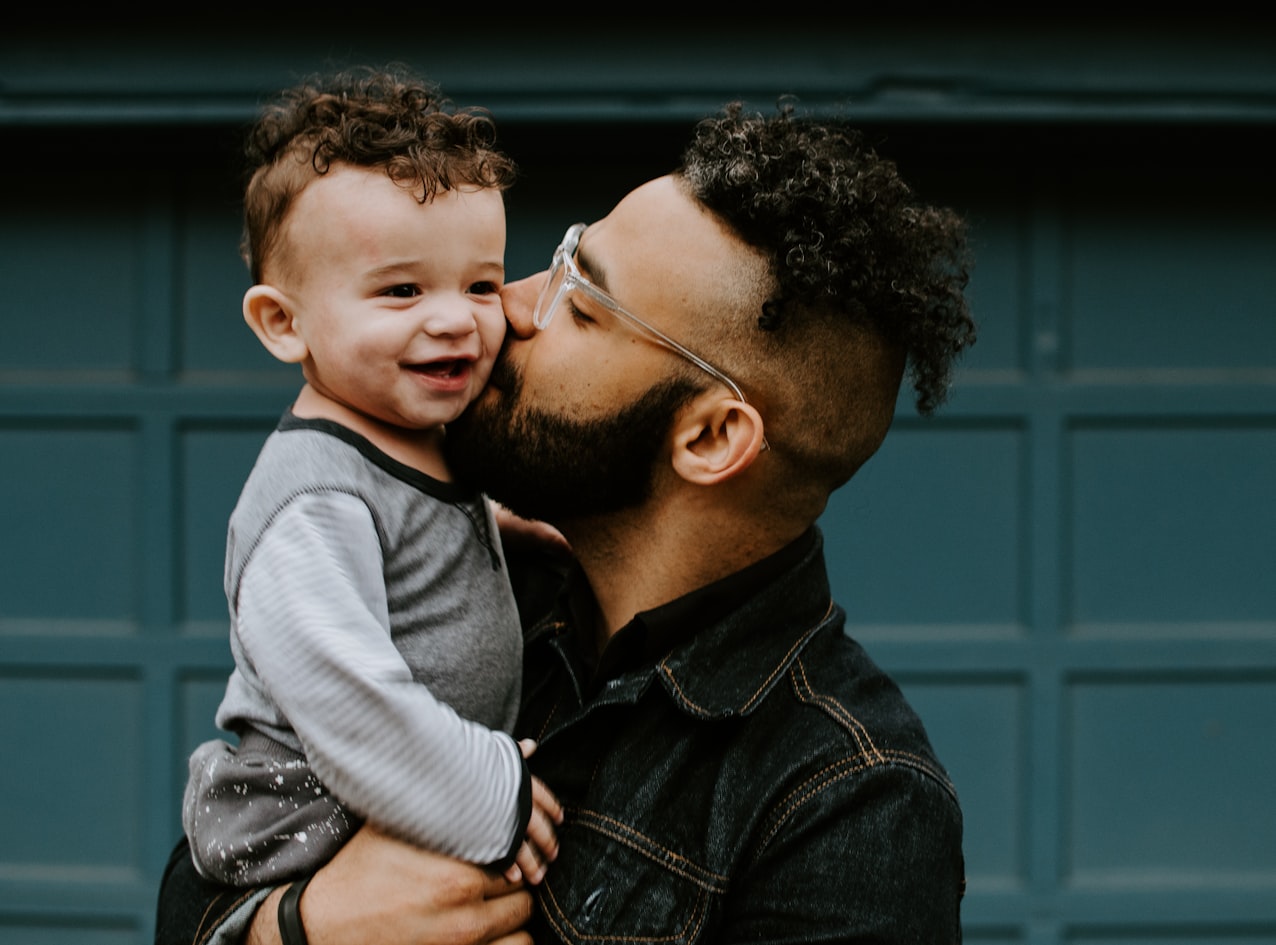Before you read the full post to learn about keeping your baby safe, take our quick quiz to see where your baby safety knowledge is now!
powered by Typeform
For decades, parents trusted toy companies to take care of all children’s products with the utmost care. In 2020, though, parents have become more suspicious. They want to see for themselves. That’s what makes product reviewers like Dad Verb so popular. He’s a dad who wants to see products for himself and share his thoughts with other parents. We also rely on institutions like JPMA and The CSPC to safety-check them for us.
Do you know what products and guidelines are baby-safe for each stage of your child’s life? It can be hard to keep up so we’ll wrap it up in one basic post.
Guide to this post
- The Importance of Baby Safety
- Basic Guidelines for Keeping Your Baby Safe
- General Safety Notes to Keep on Your Fridge

The Importance of Baby Safety
Having a child means bringing a tiny human into a world with sharp edges, big doors, and fast vehicles. It seems like an infinite number of things that are not made for them. This is why as parents, we have to be equipped to keep them safe in just about every situation. We are the buffer between them and the big world they’ll explore in their own time.
For now, coming home from the hospital is a whole ordeal. Your first night at home is akin to an Indiana Jones movie, but all of these things can be made slightly easier with some preparation.
It helps to know the things that babies are most vulnerable to—safety-wise—and prepare to be there for them through sleep safety, feedings, clothing, all the while trying to enjoy their baby stage to the fullest. It’s overwhelming, we know, but just the fact that you’re reading this article means you’re going to do great.

Basic Guidelines Related to Keeping Your Baby Safe
Remember that this post is for basic information only. For baby safety guidelines, medical advice, and personalized suggestions for your family, you can consult the CSPC and your pediatrician.
Sleep Safety
Of course, every parent has SIDS on their mind during the baby’s first few months. Baby sleep safety starts with creating a safe sleep environment for your baby to make their breathing, temperature, and position optimal for their wellbeing. What are some things that aren’t recommended for the best baby sleep safety?
- Blankets: You can keep your baby warm by swaddling or dressing them in warmer clothing if the weather is quite cold. Avoiding blankets can help you keep your baby’s face from being covered and affecting their breathing.
- Crib bumpers: While they’re often advertised as a way to keep babies from getting their hands and feet stuck between crib slats, they’re still made of fabric and count as a crib accessory. Remember. Your baby should sleep on a flat surface with no accessories.
- Pillow: In the same way that bumpers and blankets can compromise your baby’s sleep safety, pillows also pose a threat—perhaps more directly—to your baby’s face.
- Mobiles: Mobiles are generally safe, as long as they are less than 7 inches long and the hanging parts are safe and secure. This way, there’s no risk of your baby pulling them off and posing a strangulation risk. Read more best crib mobiles and how to use them safely.
Why is it Bad to Let Your Baby Sleep With You?
Letting baby sleep in your bed, also known as co-sleeping, can be dangerous according to experts. Some make the differentiation between bed-sharing and co-sleeping, but in general, it’s better for babies to be in their own sleeping environment for the night. That way, there’s no chance of them having their face accidentally covered or their oxygen levels lowered by the proximity of your body while you get some much-needed sleep.

Baby-Safe Food (and Drinks)
Feeding your baby may be the easiest thing to do in the first six months. Whether it’s formula or breastmilk, that’s really all your baby is going to need. However, baby-safe food for 6-month-old babies can vary because this is going to be around the time you want to introduce your little one to new flavors, textures, and—believe it or not—possible allergens!
- Water: You might have seen this already, but in case you haven’t- don’t give your baby water until the six-month mark! All their hydration needs are fulfilled by milk. Giving them even a small amount of water can lead to their bellies being full and prohibit them from absorbing nutrients.
- Cereal in a bottle: Some moms swear by this to get babies to sleep through the night, but experts say it can actually make them fussier as it makes them gassy.
- Peanuts: At the six-month mark, it’s safe to start experimenting with some peanuts. In fact, it could prevent allergies for some babies. Of course, if it makes you nervous to experiment, always ask your doctor first.
- Honey: Despite the apparent harmlessness of honey, you shouldn’t give it to your baby until they’re at least 1 year old. The bacteria it holds is safe for adults, but for babies, it could cause botulism.

Baby-Safe Clothing
If you have a wiggler on your hands, you know that babies will grab onto anything and everything and bring it towards their face and mouth. This is why when it comes to baby fashion, safety is key.
- Onesies with loose buttons: This one is pretty easy to tell. It happens to all of us. One day, the button is tight on there, the other, it’s gone. What we don’t want is for the button to make its way into the baby’s mouth, so stick to snaps or zippers.
- Clothing with batteries: There are clothes that light up or have special effects like sounds. These clothes need batteries to support the special effects. If these are something you enjoy, maybe save them until your baby is older or use them only in the daytime while your baby is active. Even then, make sure your baby doesn’t get it into their mouth!
- Loose belts or clothing with drawstrings: This type of clothing can pose a strangulation threat for infants, so if your child’s clothing has any strings that could wrap around them in any way, be sure to keep an extra eye on them.
The safest clothing is simple onesies with snaps, for which you’ll want to buy a lot of because you’ll go through them fast.

Other Baby Safety Products
Baby-Safe Bottles
- Silicone baby bottles are okay: Use Silicone bottles if you’re able to find them because they’re baby safe. Just follow the sterilization process for them as stated on the packaging or by the CDC’s recommendations.
- Choose glass if possible: Glass is one of the safest materials. It is easy to clean, it is free of toxins, and there are many varieties, big and small.
- Stainless steel baby bottles: If you’re afraid of breaking your glass bottles and don’t like silicone, you can always go for a stainless steel baby bottle.
- No plastic bottles (even BPA-free ones)
Baby-Safe Strollers
- The safest stroller: It’s a stroller with a car seat or ” safe travel systems”.
- Stroller belts should have 4 points of restraint: There should be restraints on both shoulders and both hips, with a buckle somewhere on the torso, depending on your baby’s age.
- Tandem stroller: If you have more than one child, it’s better to have a tandem stroller (one in front of the other) as opposed to one where the kids are side-by-side.
- No jogging strollers: Most jogging strollers aren’t designed to recline. As a result, they aren’t appropriate for babies until they’re about 6-months-old at the earliest, but maybe keep a safer one until then.
- ⚠️ Important note: Keep your strollers out of the sun when possible, materials on your stroller (even plastic ones) can get hot enough to burn your baby. If you leave the stroller in the sun, check the stroller’s surface temperature before placing your baby in the stroller.
More information about baby stroller safety here.
More Notes on Strollers
- Never leave your child unattended in a stroller, even if you have the best break mechanism in the world.
- Always use the safety harness when your little one is inside.
- If your newborn has too much room in the stroller, you can place tightly rolled baby blankets around the baby to help keep them still, but—like in their crib—try to keep the area free of too many accessories that can cover their face.
- Always use the brakes when the stroller is static.
- Don’t hang your purse or diaper bags on the handles of a stroller as it can cause it to tip or get tangled up with the stroller.
- Many parents don’t know that you can register your stroller with the manufacturer. By registering, they can contact you if there’s a recall of the product for any safety concern.
Not every adult that comes around your baby is going to know how to keep them safe so keeping some of these basic baby safety tips on the fridge will prove helpful when friends and family come around.
Concluding Thoughts
Bringing a wonderful life into this world can be a scary thing. There are just too many things to watch out for. However, don’t let the potential dangers scare you—there is a multitude of resources online (including this blog post!) and baby products that can help ease you into parenthood smoothly and provide you with the peace of mind you deserve. If you ever run into other health-related or safety-related issues you’re not certain about, make sure to consult a pediatrician just to be safe. Navigate around the blog to find more baby safety tips!